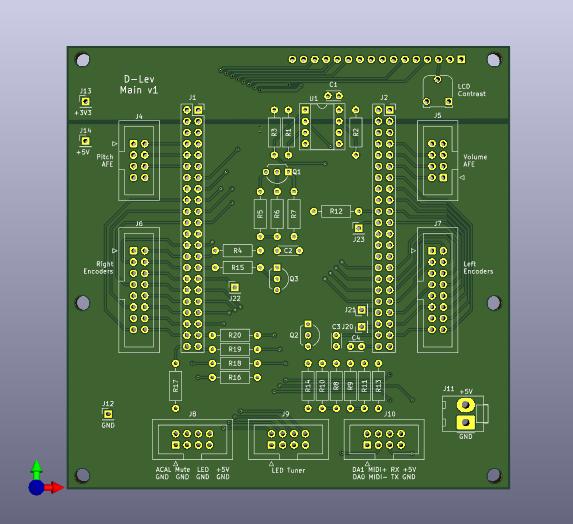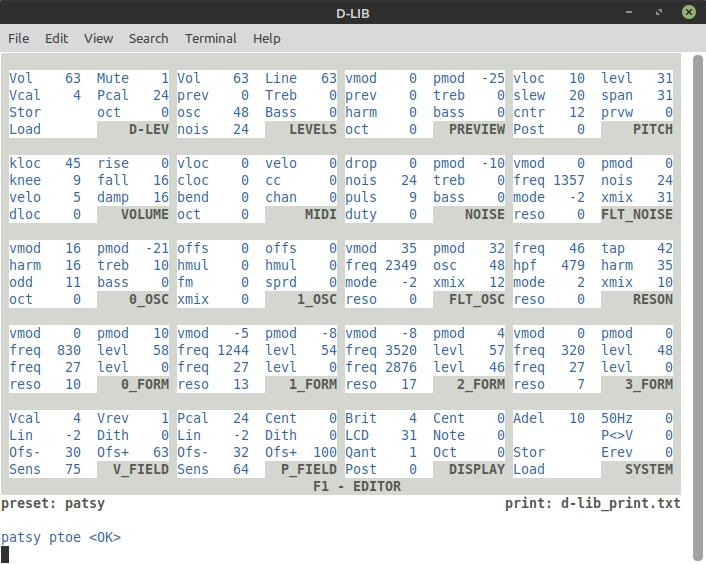Main Board Layout
Spent the day learning how to use vias (tiny plated through holes that connect one copper plane to another) in KiCad:

Saved this board for last as I figured it would be the most challenging (it was!) and wanted to be at least a little past the dangerous noob stage. The FPGA demo board, LCD, encoders, LED tuner, and everything else plugs into it, so all the interconnect, and as well as the logistics of how to handle the extra stuff like UART, SPDIF, MIDI, mute and ACAL, and mute LED I/O had to be worked out. Roger blazed this trail and I'm not deviating from it substantially as it makes a lot of sense. I guess it's a little dangerous (in terms of plugging the wrong thing into the wrong socket) but I decided to break that I/O into two reused 8 pin connectors used for the AFE's and tuner.
This is just a two layer board, so you have to get creative when wiring things together as the layers are already spoken for by ground and +5V. I split the +5V layer at the top into a +3.3 V layer and stuck the EEPROM up there with the LCD, as they are both 3.3V devices. Then I kept the paths horizontal on the front and vertical on the back. Laying resistors down on the board gave some copper room underneath, and bunching the traces together helped too. Adjusting the copper fill keep out clearances to 0.254mm minimum allowed it to snake between the 2.54mm pins and connect otherwise stranded regions.
I've seen others do this a lot at work, and I've laid out my own hand wired vector boards, so it's nothing all that shockingly new. And KiCad is really pretty nice - can't complain about the price! A new improved version is due out quite soon, which is exciting. Open software is the only way to go IMO, particularly when you're putting a lot of effort into creating lots of files. I bow to the KiCad developers, and very much appreciate their efforts. They are genuinely making the world a better place.
I had absolutely no intention to take on board layout, particularly at this point - it was just a one-thing-led-to-another and whoops! before you know it here-I-am kind of thing. Mostly I'm following Roger's physical layouts, which is 90% of the work IMO, and I deeply appreciate all the time and effort he put into it.




